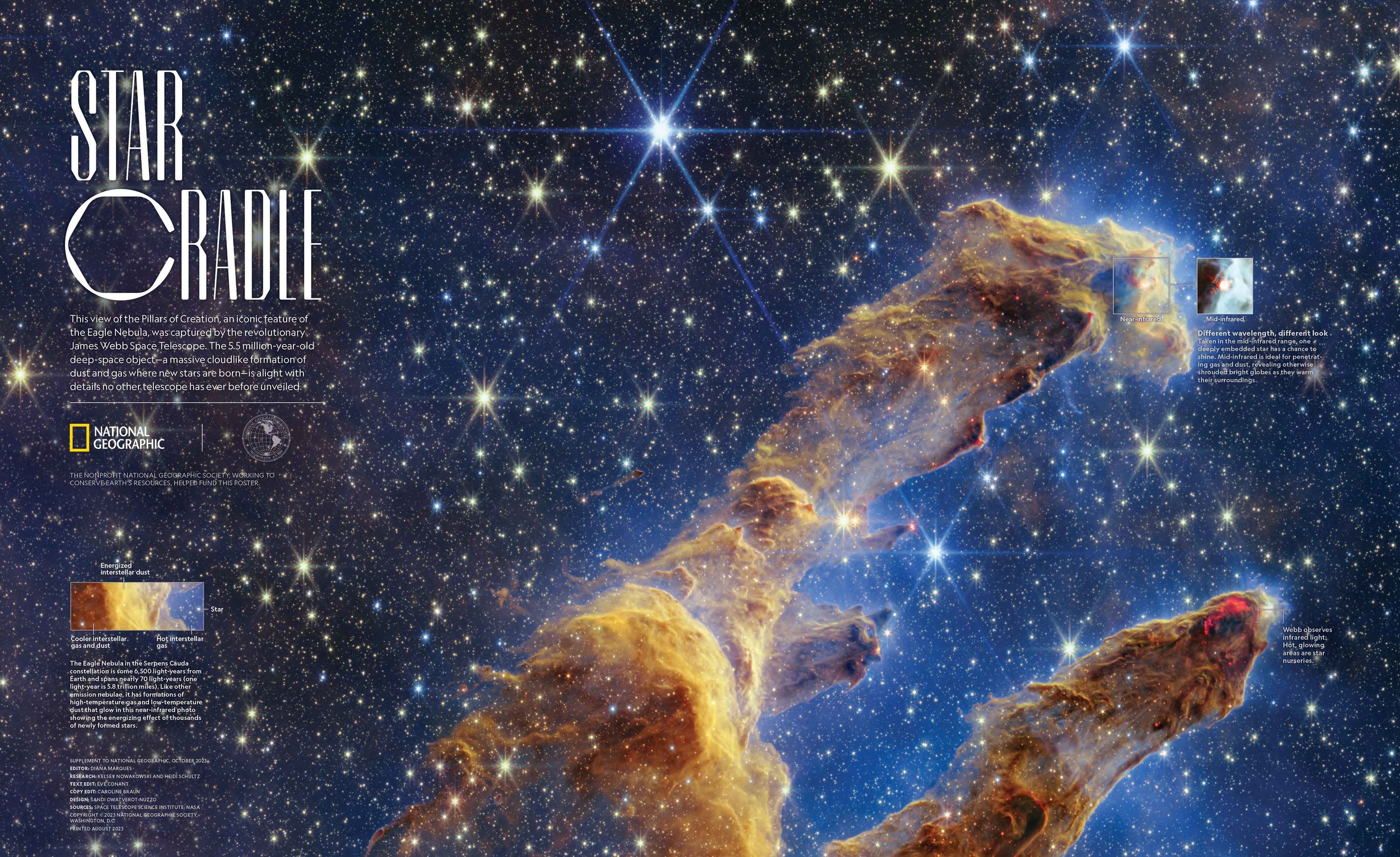Decoding the dawn
This print story was part of the October 2023 issue of National Geographic magazine and uses beautiful artwork by Mark Garlick.
The graphic has the ambitious goal of representing the timeline of the early universe, the first one billion and half years after the big bang. During this period of formation—of the first stars, galaxies, quasars—the cosmos went through transformations that never happened again in its 13.7 billions years of existence.
Discoveries about the young universe have been revealed by the Webb Telescope, making scientific observations since 2022. Some of the questions the observatory is trying to answer are covered in the graphic too.
See the online version of the graphic (which may be behind a paywall), with amazing photos taken by the telescope and simulation videos of early star-forming regions and galaxies.
Also in this issue is a large-format poster featuring one of the most iconic regions in space, the Pillars of Creation. First popularized by the Hubble Space Telescope photos, the area is seen in the poster as captured by the Webb Telescope. We added graphics about the revolutionary observatory and the details of the image.
The poster was graced by an Award of Excellence attributed by the Society for News Design, and the graphic and poster were part of the portfolio of maps and graphics in the space issue that was awarded a Silver Medal.
© 2023 National Geographic / All Rights Reserved

